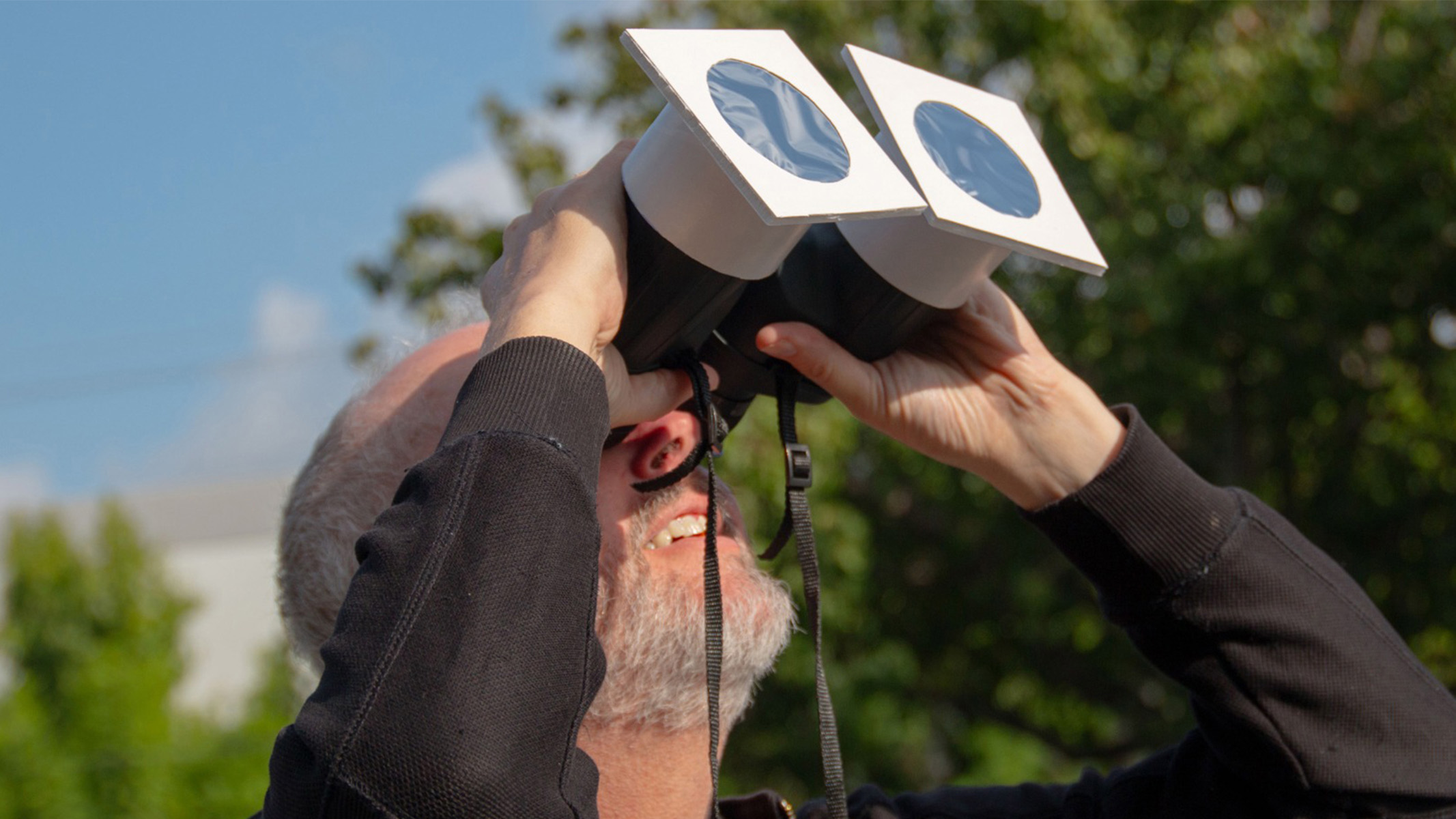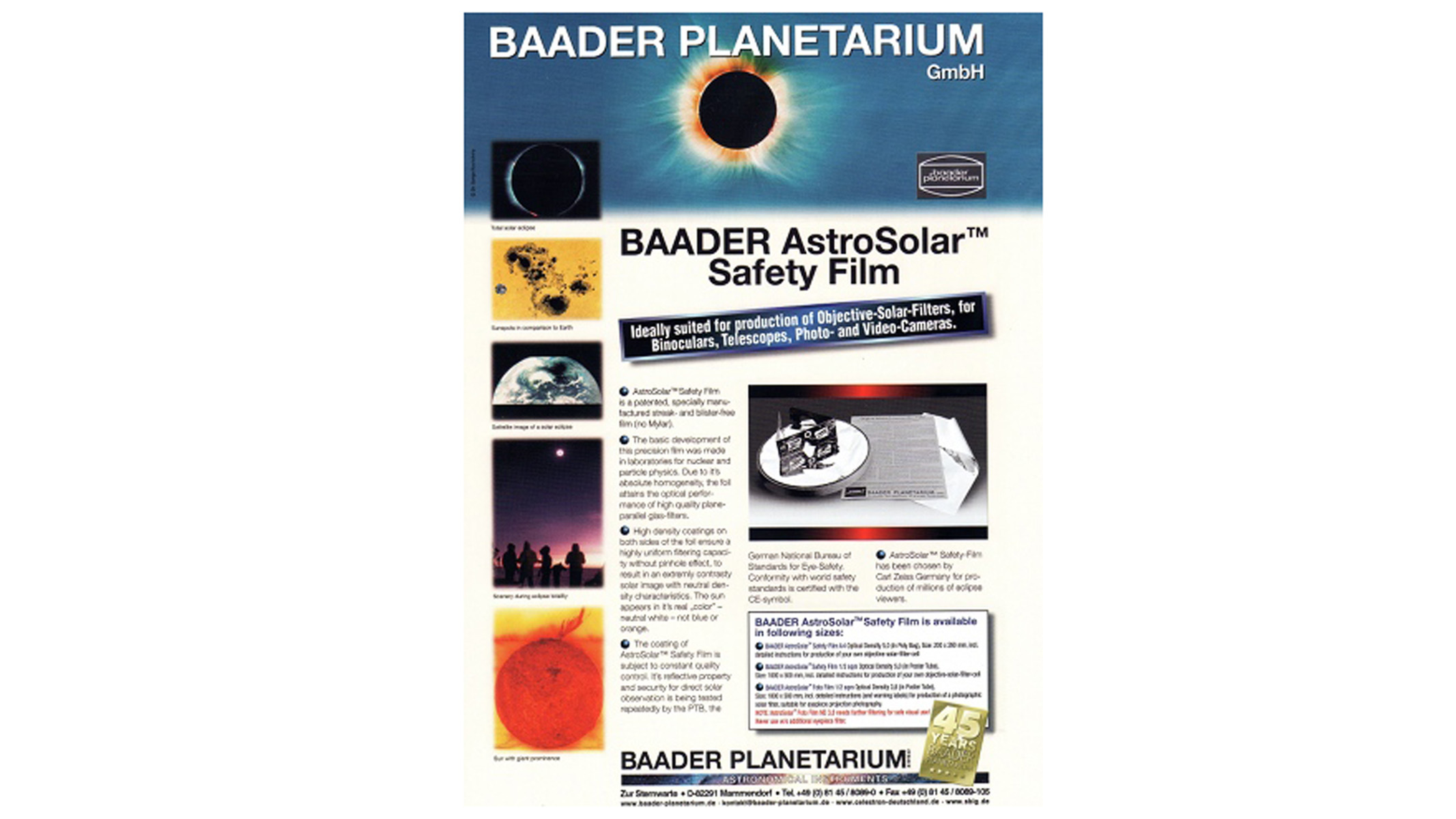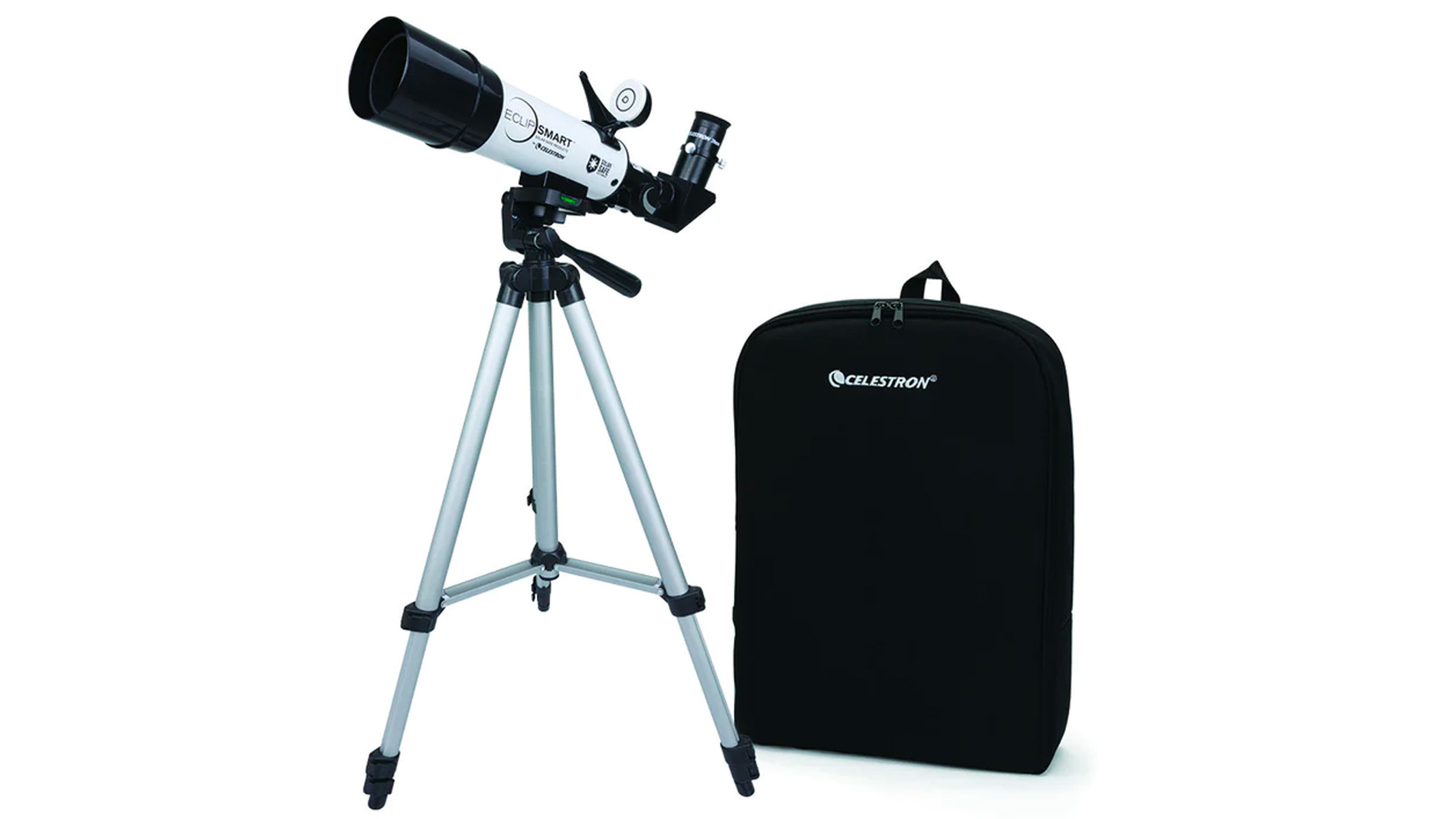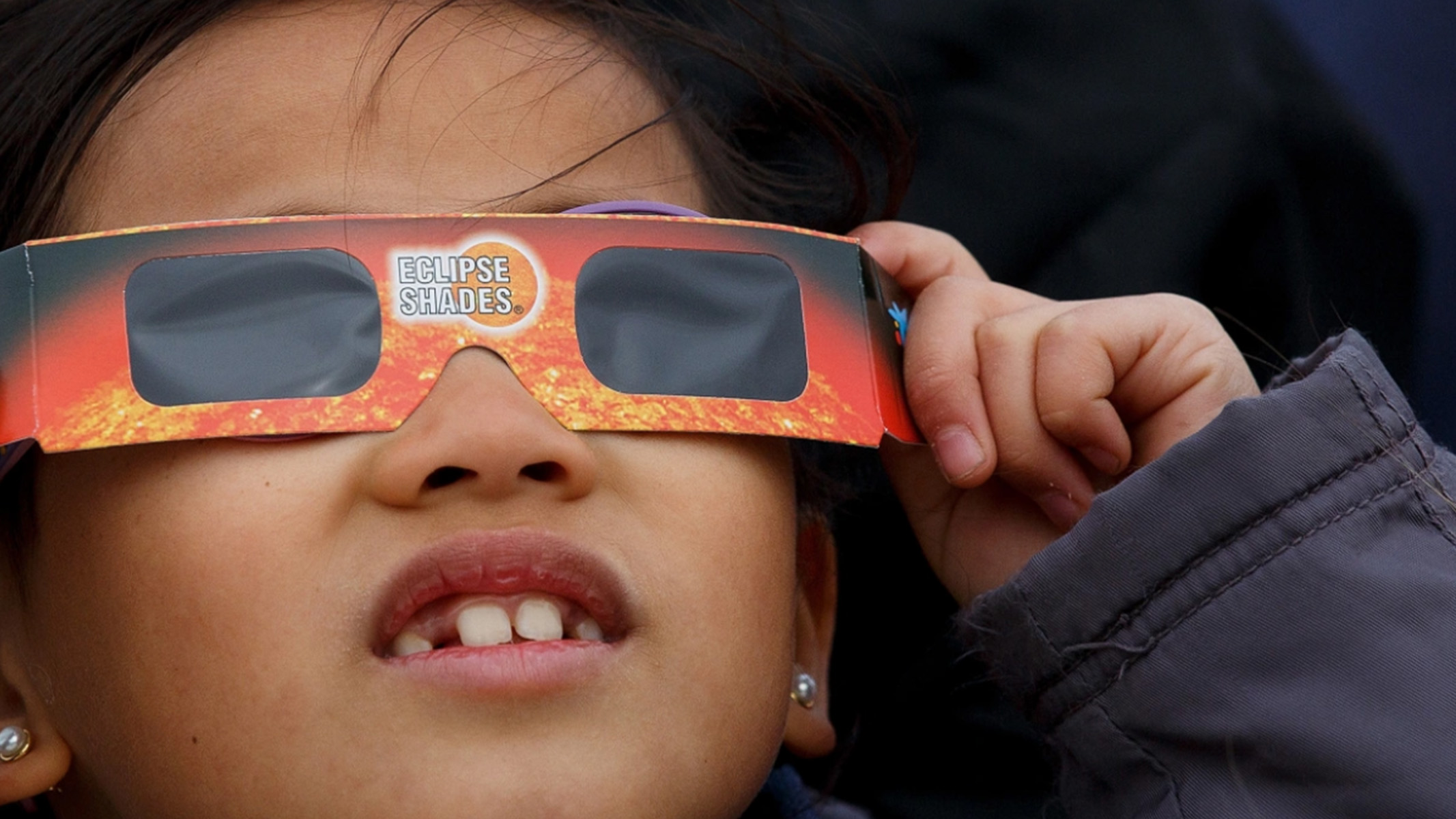Top 5 items I recommend to safely observe the sun: Get solar eclipse ready
All the items you need to know about to observe our local star, the sun, safely ahead of the next solar eclipse.

The sun is an amazing celestial object. It is not only at the heart of our solar system and our local star, but it is fascinating and its appearance changes constantly. When observing the sun, don't look at it with the naked eyes, even through thin or thick clouds. We must emphasize the importance of using the correct solar observation equipment when safely observing the sun without damaging your eyes.
Aside from eye protection, don't forget appropriate clothing, regular sunglasses (away from observation), and your sun cream. The same can be said for audiences in snowy climes and within the Arctic Circle, where light reflecting from the sun also needs safety considerations.
ahead of the next solar eclipse, this guide has you covered for the eclipse to take center stage.
Observing the sun with the naked eye
First of all, NEVER, look directly at the sun. It may seem blaise, but the number of astronomers we know who have damaged their eyes by accidentally looking directly at the sun is as bad as it gets, so do not do it without adequate protection.
One of the simplest, most atmospheric ways to observe the sun is through gaps in the trees. This is known as 'the bokeh effect'; where light from the sun renders out-of-focus points of light. When you next walk down a sunny boulevard or through the woods and see circular points of light projected on the ground, you are looking at individual projections of the Sun! Those of you who are lucky to be on the path of totality during the next total solar eclipse will notice the shape of these light projections change as the partial eclipse grows up until the moments before totality.
The next technique has been used for many years—create a simple pinhole solar projector. By simply producing a small pinhole through any papercraft, you can project an image of the sun, and this is by far the safest method. NASA has a great online resource for making your own Solar Viewer out of your cereal box!
Solar glasses
- Amazon: Celestron solar eclipse glasses
- Walmart: Solar glasses, binoculars and filters available
- Best Buy: Solar glasses, viewers, telescopes and binoculars
- B&H Photo Video: Single and multipack eclipse glasses
It must be mentioned that NASA does not approve of any solar-safe observation. However, there are solar eclipse viewers, in the form of eclipse glasses and solar 'viewers,' which are approved by 'ISO specifications'.
Breaking space news, the latest updates on rocket launches, skywatching events and more!
Genuine eclipse filters and 'eclipse glasses' must adhere to the ISO 12312-2 international safety standard. You can usually find these details on the inside of the frame of genuine eclipse viewers and glasses. Avoid glasses with any other specification, as this does not guarantee safe solar viewing. ISO 12312-2 assures that the product protects you from the sun's harmful ultraviolet (UV) and infrared (IR) rays. Take a look at our solar eclipse eye protection guide.
Using eclipse glasses and viewers is such a fun way to observe the sun, not only for upcoming eclipses but also to give you perspective on the scale of the Solar Disc. Expect to see larger sunspots if and when they become visible and a 'bite' being taken out of the sun during a solar eclipse.
When observing the sun (using this method), do not look too long at it and take breaks. Bearing in mind that this form of protection blocks 99.999% of light, some harmful light can be exposed if observed for longer periods of time.
Binocular adapters

Binocular adapters (filters) work similarly to constructing your own solar filter. This time, you need to cover both lens elements on your binocular optics. You can get filters that are made for specific models, so bear this in mind. If it doesn't fit, DO NOT use it.
We recommend Celestron's Eclipsmart range. They are great, affordable examples of binocular adapters. We would recommend taking extra precautions, such as taping them to your binoculars, to avoid them slipping off during use.
Another great supplier is Astrozap, but make sure the filters listed are compatible with your kit. My one piece of advice would be to arrange this as soon as possible, as you can imagine, Astrozap is very busy.
Binocular observation allows for a more casual, relaxed view of solar eclipses. Not only do you get great scale when viewing the sun, but this process also means that viewers on the path of totality can remove their filters once the sun is totally eclipsed by the moon. This is the only window of opportunity to view the sun's outer corona and hopeful prominences. Read more here about other amazing things to observe during a solar eclipse.
Solar filters

Constructing your own solar filter can be a fun way to observe the sun safely. If done correctly and looked after properly, your filter can be used for several years.
Baader Solar Film is your answer. Not only do they have fun graphics on the front of their advertising, but they also include important information on how this solar material meets international ISO standards, solar viewing and how to make your filter 'solar-safe'.
Solar sheets nowadays are typically available in a number of sizes: 20 x 29.5 cm (approx. A4), 100 x 150cm rolls, and smaller 10 x 9.7cm squares. For beginners, we would strongly advise purchasing the 20 x 29.5cm sheet in case you make a mistake — you can discard your filter and have enough left to make another one.
Follow the instructions that indicate 'sandwiching' the filter between two circular discs of card and then creating an attachable element that is the same measurement as tight to your optical element. This process also applies to DSLR cameras, binoculars, camcorders and making your own Solar Viewer. It sure is a fun activity in the build-up to a solar eclipse.
If you plan to use your existing telescope/binoculars and construct your own solar filter using a filter sheet, ensure you follow the instructions exactly as described and only use the solar sheet if there are no holes or creases that may distort or even damage the sheet's optical properties. The filter must be firmly fitted on the front of the optical element and must not be loose. It is advisable to use tape as well to make sure it's firmly attached to your telescope. You do NOT want to observe the sun, only to find your DIY filter blows off and exposes your eyes to harmful rays.
Solar telescopes and binoculars

Dedicated solar telescopes and binoculars revolutionize how you observe the sun and with precedent clarity.
You may prefer to invest in a dedicated pair of solar binoculars or a solar telescope. They are specifically designed to observe the white light spectrum of the sun. Others are designed to observe other wavelengths of light. Two popular wavelengths are Hydrogen-Alpha and Calcium-K.
Hydrogen Alpha focuses on observing solar prominences, plasma, granulation, and sunspots. Calcium-K is more designed to look at the latter, granulation and sunspot activity.
We can recommend the Celestron Eclipsmart travel solar scope 50 telescope which we've previously reviewed, and we have compiled a list of the best solar binoculars.
Using shadows
As with any form of solar observation, if using a telescope or telephoto lens for the next solar eclipse, don't forget you can make use of shadow to get your kit into position.
Yes, your Optical Tube setup can be used to help point your equipment in the right direction without the need to use a solar viewer or finderscope! The concept is to produce as small a shadow as possible with your optical element of choice. Once it is, the sun is roughly aligned through your LCD monitor or telescope.
Scan this area first. If you see brightening off to the edge of either your eyepiece or LCD screen you know the sun is nearby. NEVER use your optical viewfinder on your camera (if it has one) to find the sun's location.
When is the next solar eclipse?
The next solar eclipse is on October 2, and it will be visible from parts of South America as well as North America.

Josh Dury (B.A. FRAS) is an Award-Winning Landscape Astrophotographer, Presenter, Speaker and Writer based in Somerset, UK. His work has been recognized by NASA, Astronomy Picture Of The Day, BBC, CBS, and CNN, amongst others. With endorsements from Apollo 11 Astronaut Buzz Aldrin and ESA British Astronaut Tim Peake. His work has been recognised by major photographic and astronomical bodies, including The World at Night (TWAN), Astronomy Photographer of the Year, Historic Photographer of the Year and PetaPixel, whilst collaborating with photographic brands: Canon, Sigma, Benro, NiSi and Tenba. As a Delegate of The International Dark-Skies Association (IDA) he uses astrophotography as a platform, in raising awareness of dark-sky conservation and the impacts of light pollution to the natural environment.
- Jase Parnell-BrookesManaging Editor, e-commerce

